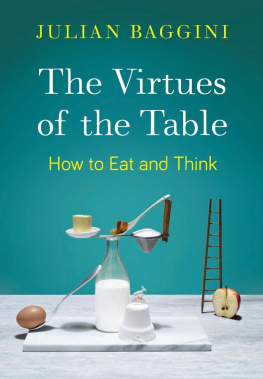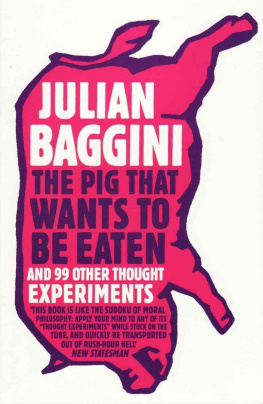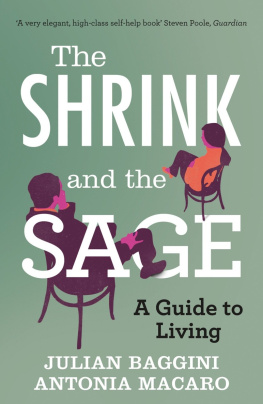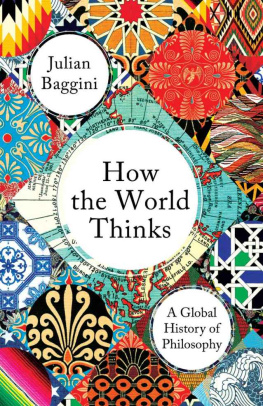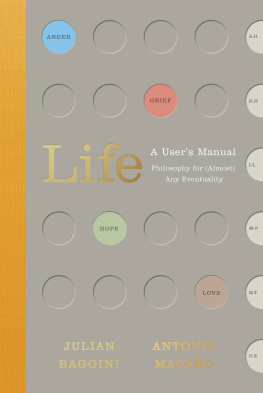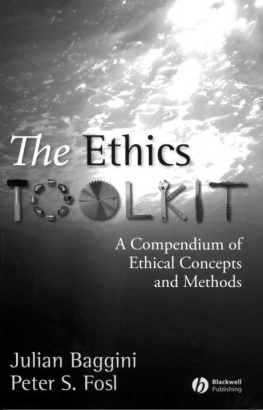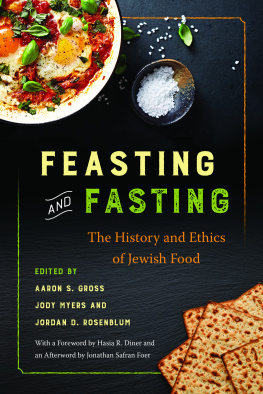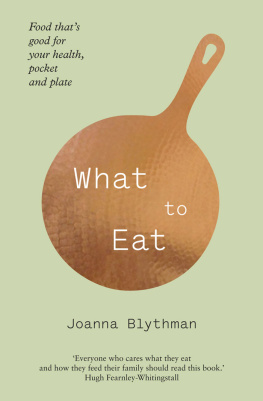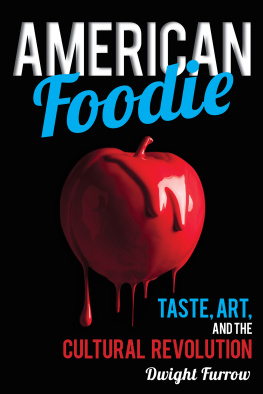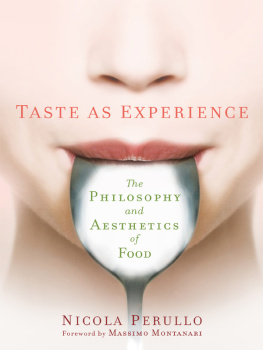THE VIRTUES OF THE TABLE
How to Eat and Think
Julian Baggini

To know how to eat is to know how to live. Auguste Escoffier
Contents
Introduction
We are supposed to be living in a golden age of food. Cooking, for so long associated with domestic drudgery, has been rediscovered as a creative pleasure. The quality of high-street restaurants has gone up, and the number of truly good ones has increased. Nutritional science, although incomplete, gives us a very good idea of what a healthy diet looks like. Ingredients that were until recently thought exotic and hard to obtain are available in every supermarket. Humanely reared animals and environmentally friendly produce have never been more widely available.
Yet there is the niggling doubt that all this might be as devoid of substance as the asparagus foams that are served up in Michelin-starred temples of gastronomy. Sceptics are increasingly challenging the zeal and excesses of the new foodism. Steven Poole captures this contrarian mood in the title of his wonderfully acerbic You Arent What You Eat . Even serious food writers like Adam Gopnik have voiced the concern that Having made food a more fashionable object, we have ended by making eating a smaller subject. The drive to keep up with the latest ingredient, restaurant, dietary fad, piece of nutritional advice, cookery book or kitchen gadget takes on its own momentum and we forget if we ever knew why we should be so concerned with eating in the first place.
What has been missing from the food renaissance is a rigorous thinking-through of why food matters and what our relationship to it should be. Without such a philosophy of food, our practices just become a contradictory mishmash of fashion, common sense, received opinion, prejudice and rationalised desire, and, indeed, the new food culture is patchy and incoherent: takeaway on Friday night, farmers market on Saturday morning; local chard for dinner, premium imported orange juice and coffee for breakfast next day; low-GI spelt bread with high-fat artisan cheese.
This book is an attempt to bring some clarity to this confusion, by articulating a thorough and wide-ranging philosophy of food, one to eat, drink and live by. This is not primarily a philosophy of rules and principles but one of virtues, by which I broadly mean dispositions, habits, traits, skills or values that help us to live better lives. Not all of these are familiar from traditional lists of virtues, in part because of our limited vocabulary. For example, to be able to appreciate art properly is a virtue, but there is no one word that names this capacity.
I advocate the virtues of the table because rules are too rigid an instrument to deal with most of the complex issues around food, and the good life in general. And if you base behaviour on rules that you know from the outset will have to be bent or broken, too often the result is hypocrisy or confusion. Virtues, however, are inherently more flexible and adaptable to different situations and changing times. They are also more enabling, since they foster individuals abilities to choose well for themselves, rather than simply follow guidelines set by others.
Each of the chapters in this book focuses on an aspect of food and eating, and also on a virtue associated with it. The virtues, however, are connected, and the overarching theme of this book is the challenge of figuring out how we can live in a way that does justice to our complete selves: we are creatures of mind, body, heart and in one sense soul. Food is not the only key to understanding how they form one whole, but it is a particularly well-cut one because it involves every essential aspect of human nature: the animal, the sensuous, the social, the cultural, the creative, the emotional and as I
The first part of this book (Gathering) covers many of the big issues familiar from recent debates about food ethics, such as organics, sustainability and animal rights. The focus here is on the question of how to live in relation to others. Although the subjects are familiar, there is a need to interrogate them more thoughtfully than the usual, tired for-and-against debates conducted between converts and critics. Part II (Preparing) centres on how we ground our judgements of what is right and wrong, better or worse. Parts III and IV (Not Eating and Eating) mark a turn inwards, with an emphasis on developing the character and habits that enable us to make good choices, live well and flourish as individuals.
The overall progression of the book is away from the big issues of interpersonal morality towards less familiar, often more personal and everyday aspects of food and how our ways of eating shape our selves. These two sides of the ethical life are of course connected: the good life concerns how we help the flourishing of both ourselves and others.
To keep sight of the practical, I have included at the end of each chapter some thoughts on particular foods, many of which take the form of recipes of a sort. If thinking better, living better and eating better all come as part of the same package, as I contend they do, this book should be one for the kitchen as well as the study, bedside or living room.
Overall, the book could be said to address the age-old question Should you eat to live or live to eat? by rejecting the false choice it implies. Food is neither a mere means to the end of living nor the ultimate end of life itself. It is rather an integral part of life, and living well means putting food in its rightful place. If you can do that, you know how to eat, and you know how to live.
PART I
Gathering
If you dont know where it comes from, you dont know what it is.
Check it out
SAPERE AUDE
W hen I first had the idea of talking about the connection between cheese and the philosophy of Immanuel Kant, I thought the conjunction of the two would be unprecedented. This, after all, was the writer of The Critique of Pure Reason , not pure Boursin, and the Groundwork of the Metaphysics of Morals , not mozzarella. What I didnt know is that cheese and Kant are already linked, and not in a good way.
According to Kants friend and biographer E. A. C. Wasianski, Kants deteriorating health towards the end of his life was exacerbated by a poor diet containing too many English Cheddar sandwiches. On 7 October 1803 he indulged his craving more than usual. The next morning, out for a walk, he lost consciousness and fell. Another biographer, Manfred Kuehn, suggests, The excitement over the forbidden food might have raised his blood pressure and brought on the stroke. Kant was never the same again and he died on 11 February 1804, his last words being, Es ist gut . (It is good.) This was a judgement not on his life or work but on the bread and wine he had just been given by Wasianski.
There is something wonderful about the most basic trio of cheese, bread and wine playing a leading role in the last days of one of the greatest thinkers in history. Food can bring even Kant right down to earth. It is perhaps then a fitting tribute to Kant that one of his most important ideas can be exemplified not by a timeless metaphysical dilemma or a thorny moral problem but by simple, humble cheese.
Kant opens his famous essay What Is Enlightenment? with the words:
Enlightenment is mans emergence from his self-incurred immaturity. Immaturity is the inability to use ones own understanding without anothers guidance. This immaturity is self-incurred if its cause lies not in lack of understanding but in indecision and lack of courage to use ones own mind without anothers guidance. Dare to know! ( Sapere aude .) Have the courage to use your own understanding is therefore the motto of the enlightenment.
Next page
